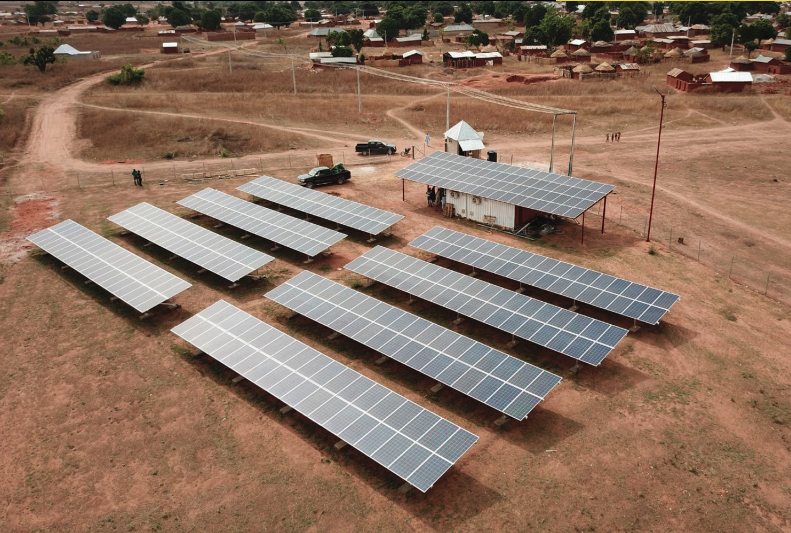Editor’s note: This blog is part of ImpactAlpha’s “Scaling Impact” series, authored by participants in the Catalytic Capital Consortium (C3) Scaling Learning Labs. Key insights have been published in a C3 Guidance Note on scaling (for more, see the executive summary and full report). C3 sponsors ImpactAlpha’s catalytic capital coverage.
Development finance institutions aim to make themselves obsolete. We want to play our part in the early development stage of a company, sector, or country, and leave commercial financiers to bring investees to the next level. If catalytic capital providers stick around too long, we can hamper the development of a sustainable ecosystem. As such, it is crucial to reduce catalytic funding as soon as feasible.
How soon is too soon? When does it really make sense? To determine how and when to decrease catalytic capital, we at FMO, the Dutch development bank, apply the following principles:
Clarify role of capital
Too often, financiers don’t present a clear thesis on the role of their capital, and the stage of development the investee is currently in. To ensure the right type of capital is employed, it is crucial to identify the appropriate source of funding and level of concessionality that’s required to make certain investments work.
As such, FMO aims to accelerate its impact via its progression model, consisting of four distinct stages of maturity and associated funding sources (in order of reducing concessionality):
- To create markets and develop (small) unbankable opportunities into bankable projects FMO provides soft funding through a mix of business development and eco-system development activities. An example of this is the recently signed $750,000 Repayable Development Contribution signed between FMO and AEE Power, which financed early development of a large mini-grid scheme.
- FMO’s public funds enable FMO to create, innovate and develop new markets, products and segments and to make higher risk investments, such as the financing of more innovative fund strategies or earlier stage companies. For instance, we made a catalytic investment in the Energy Entrepreneurs Growth Fund to support early-stage companies in the energy-access space.
- Through FMO-A (our own balance sheet) FMO typically provides funding to scale investments, including follow-on funds and maturing enterprises.
- By mobilizing third-party commercial partners FMO aims to increase and further scale its impact, as in our risk-sharing agreement with Munich Re. It offers the insurance giant an opportunity to invest in Sustainable Development Goals (SDGs) while helping FMO expand financing in emerging markets.
In general, we can avoid unnecessary usage of the more risk-tolerant (and scarcer) funding pockets by providing clear explanations to the various internal and external committees on the additionality of a proposed investment.
Blend funding sources
Too often, scarce catalytic capital is taken up by investments or initiatives that don’t need to be fully funded by such risk-tolerant capital. While blending can create structural or legal difficulties, it has the potential to substantially reduce the amount of catalytic capital required for certain investments, allowing the number of financeable initiatives to increase markedly.
Most debt investments in initiatives in the scaling phase (as opposed to the seeding phase) benefit from and are protected by a sizeable equity investment. If, on top of this, we split the debt investment into a catalytic tranche provided by more risk-tolerant capital (or an unfunded guarantee, such as FMO’s NASIRA program) and a senior tranche provided by commercial or DFI balance sheet funding, we can create a large first-loss buffer.
Even in relatively risky transactions, such as those in the off-grid electricity sector, this allows the crowding in of more commercial capital, reducing the required amount of catalytic capital substantially. In addition, it allows commercial capital to build up knowledge and a track record in a certain market, sector, or country, reducing the likelihood of requiring or the amount of required catalytic capital in future funding rounds.
Know when to recycle funds
Many catalytic funding initiatives, whether corporate, project, or fund, have relatively long lives. Various debt or equity funds last for more than 10 years, while infrastructure-related investments tend to be even longer. It’s likely that during such investment the underlying risk reduces over time, whether through general sector development or the maturation and improvement of the investees, or through a reduction of perceived risks with increasing familiarity, track record and data availability. At such a moment, catalytic capital can (and should) be reduced, to be replaced by less catalytic / more commercial funding.
Too often, investors fail to periodically assess the continuing requirement for catalytic capital, locking up large volumes of catalytic capital in investments that don’t require it anymore. This significantly reduces the amount of available catalytic capital, and as a result fewer (new) initiatives can be funded. Investors should be diligent, and schedule regular (e.g. annual) reviews of the necessity of their catalytic capital in their investees.
Share information
Most transactions involve multiple investors, some of which may have more experience investing in comparable initiatives than others. Sharing of information, track record and experiences can help other investors in their assessments and, if substantiated by the track record, reduce their perception of risks.
Such improved risk perception in turn results in a more optimal allocation of (catalytic) capital, potentially increasing the amount of (more) commercial capital invested. For example, FMO regularly publishes evaluation reports, such as recent ones on investments in the off-grid space and clean cookstoves.
If investors are diligent and conscious about these four principles, they can drastically reduce the amount of concessional and catalytic capital required for transactions over time, allowing them to support more initiatives and, ultimately, maximize impact.
Ward Nusselder is investment officer with FMO, the Dutch development bank.











